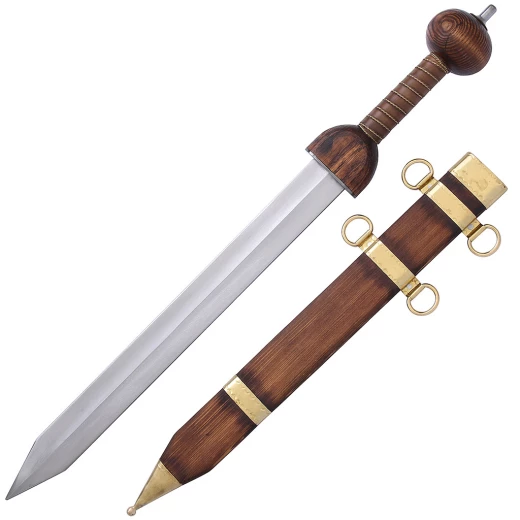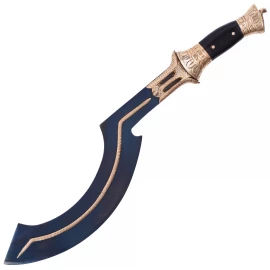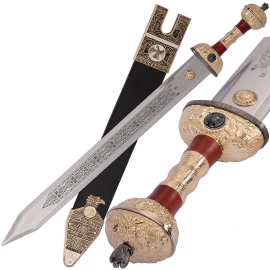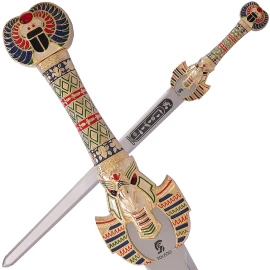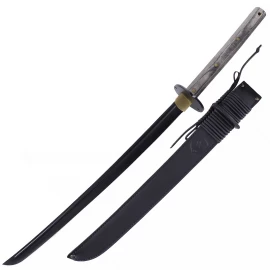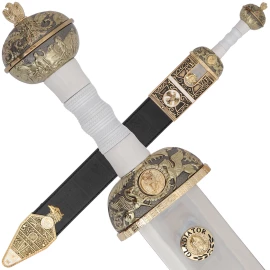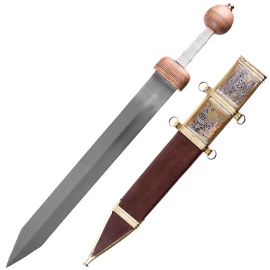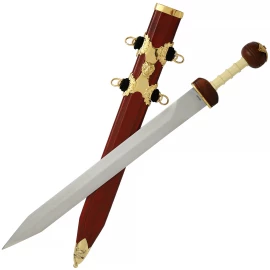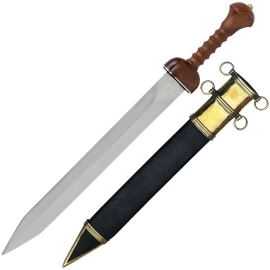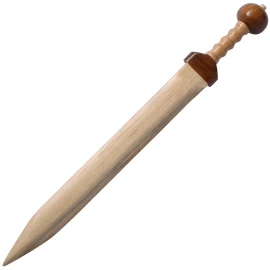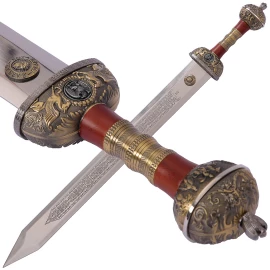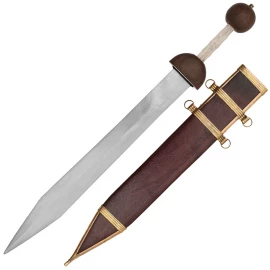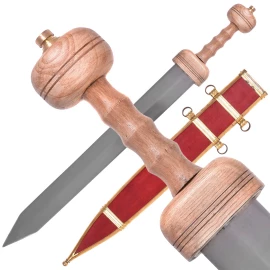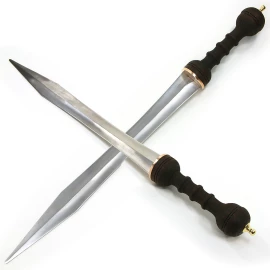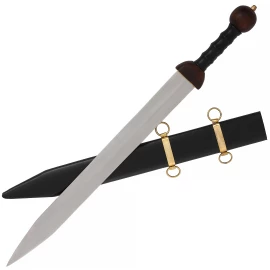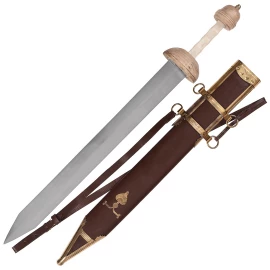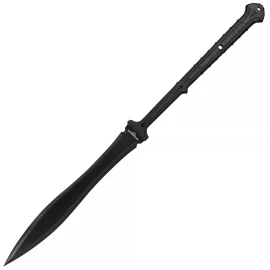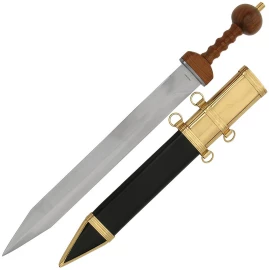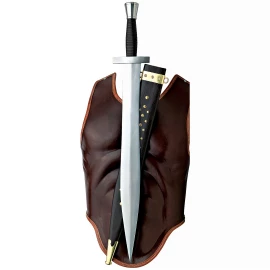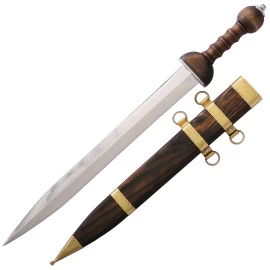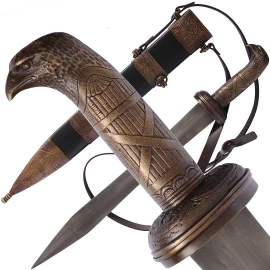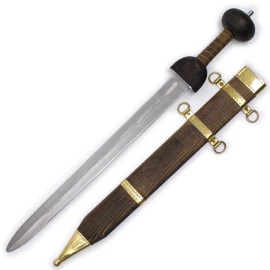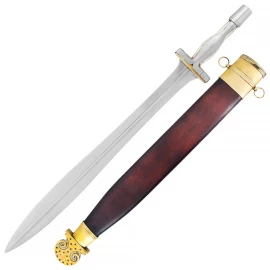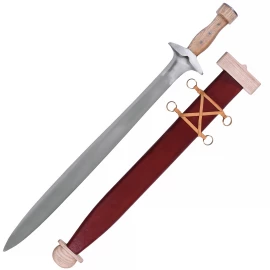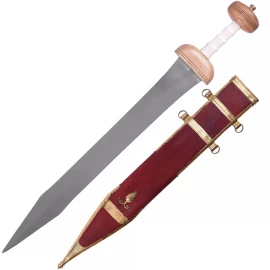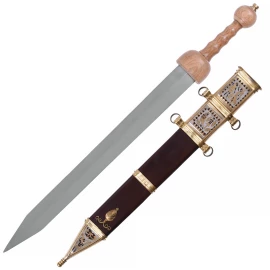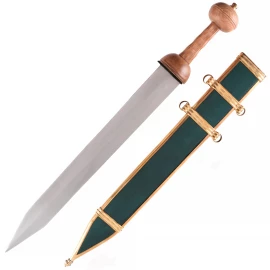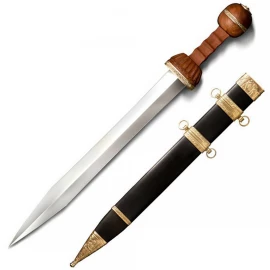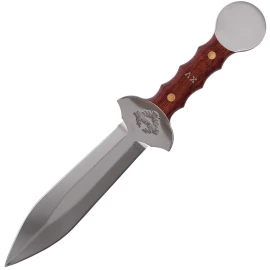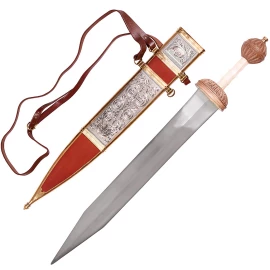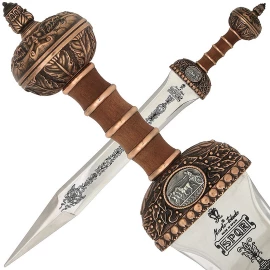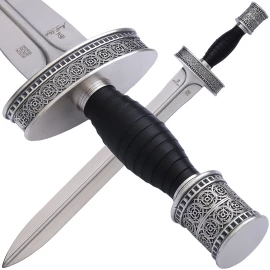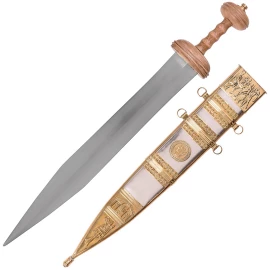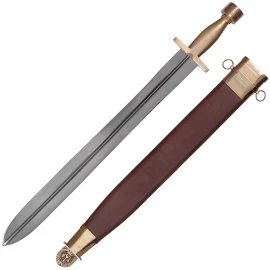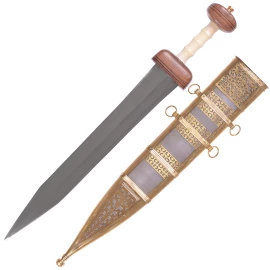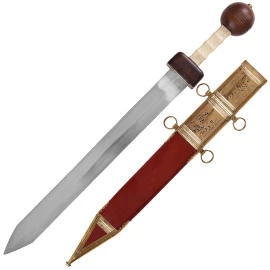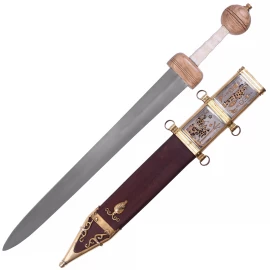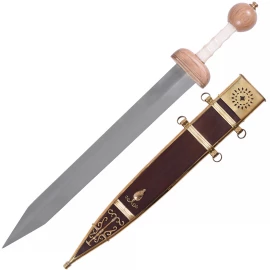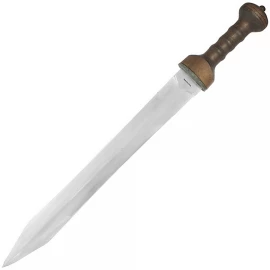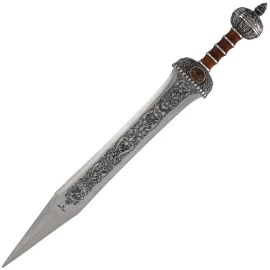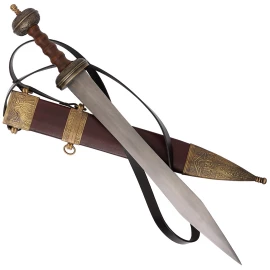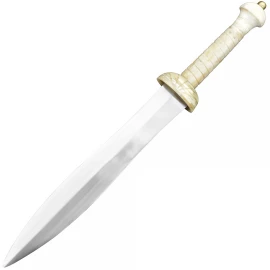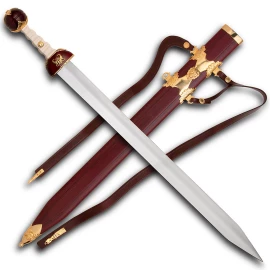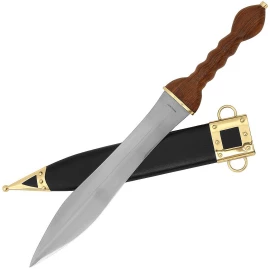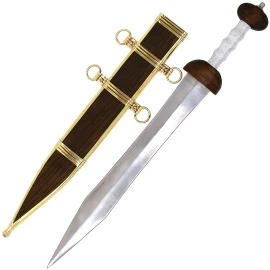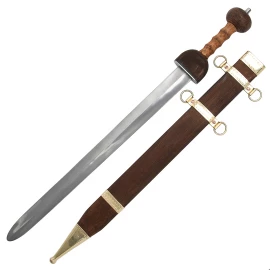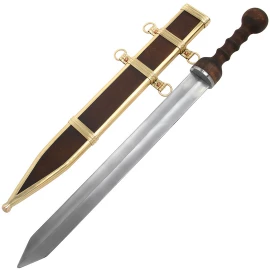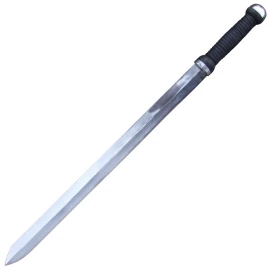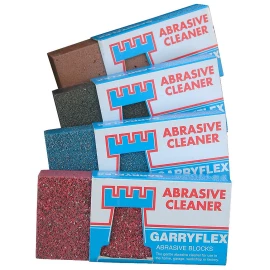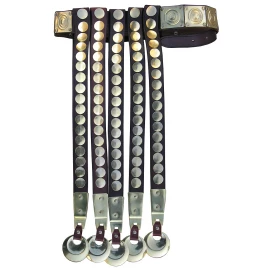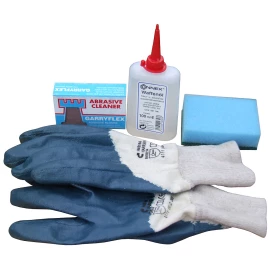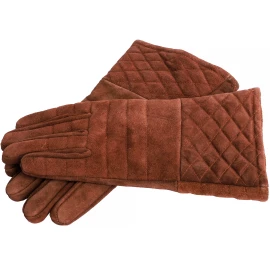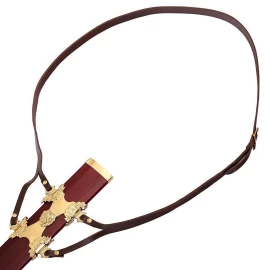Roman Gladius Gladiator, class B
Gladius is a Latin word for sword. Early ancient Roman swords were similar to those used by the Greeks. From the 3rd century BC, the Romans adopted swords similar to those used by the Celtiberians and others during the early part of the conquest of Hispania.[citation needed] This kind of sword was known as the Gladius Hispaniensis, or "Hispanic Sword." More information...
Roman Gladius Gladiator
Sword class B
- Overall length approx. 76cm
- Blade length approx. 71cm
- The guard is approx. 77mm wide and approx. 40mm long
- The diameter of the pommel is approx. 76mm
- The peg behind the guard is approx. 24mm long and of a 24mm diameter
- The blade at the guard is approx. 49mm wide and 5mm thick
- The blade width is constant and begins to taper at about 71mm far off the blade point
- The grip (distance between pommel and guard) is approx. 11cm long
- Weight of the sword without scabbard approx. 1088 g
- Weight of the sword including scabbard approx. 1358 g
- The blade is made out of hardened and tempered high carbon spring steel that is not stainless.
- Blade of spring steel W.Nr. 1.7102 (DIN 54SiCr6) quenched to a hardness of approx. 53 HRC
Specs may slightly vary from sword to sword. Made in the Czech Republic.
It was once thought that they were similar to the later Mainz types, but the evidence now suggests that this was not the case.[1] Rather, these early blades followed a slightly different pattern, being longer and narrower, and were probably those that Polybius[2] considered good for both cut and thrust. Later extant Gladiiare now known as the Mainz, Fulham, and Pompei types. In the late Romanperiod, Publius Flavius Vegetius Renatus[3] refers to swords called semispathae (or semispathia) and spathae, for both of which he appears to consider gladius an appropriate term.
A fully-equipped Roman soldier would have been armed with a shield (scutum), several javelins (pila), a sword (gladius), probably a dagger (pugio), and perhaps a number of darts (plumbatae). Conventionally, the javelins would be thrown before engaging the enemy, at which point the gladius would be drawn. The soldier generally led with his shield and thrust with his sword. Contrary to popular belief, all types of gladius appear to have also been suitable for cutting and chopping motions as well as for thrusting. Source: Wikipedia
Please read our: Directions for the use of bladed weapons.
We are here for you


